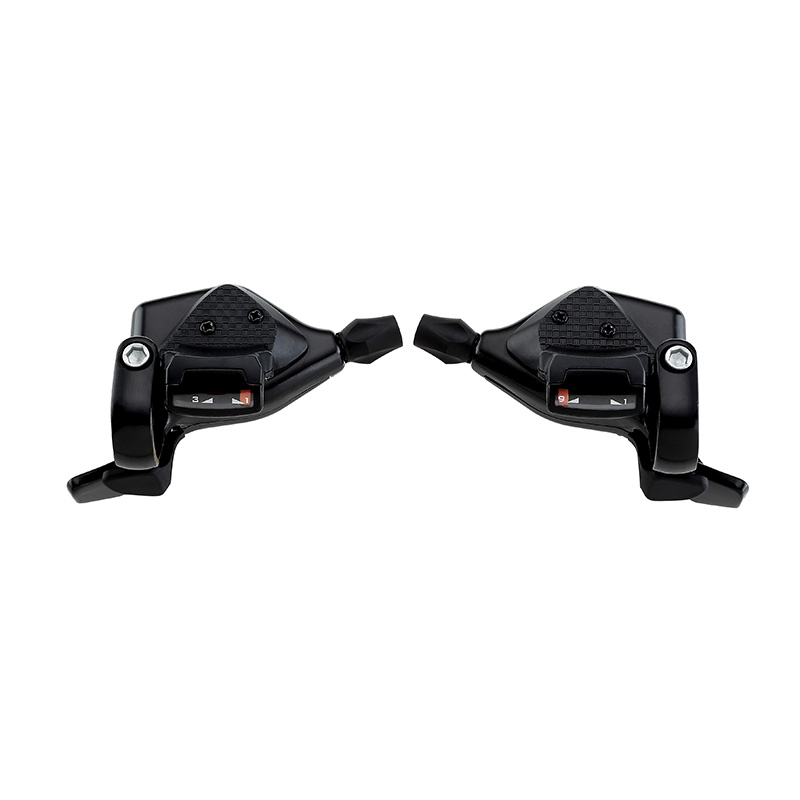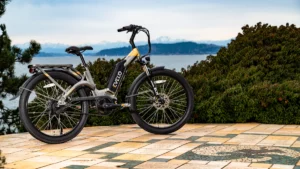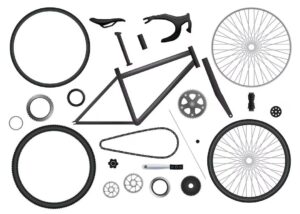Dans l'industrie du vélo, Le mécanisme par lequel vous changez de vitesse - le bicyclettes - est essentiel à votre expérience de conduite. Des ajustements rapides sur les montées raides aux transitions sans couture sur les descents d'enroulement, Le type de levier de vitesses que vous choisissez peut avoir un impact significatif sur vos performances et votre plaisir. Plongeons dans les différents types de mangeoirs à vélo pour comprendre leurs fonctionnalités, avantages, et considérations lors de la sélection de la meilleure option pour vos besoins cycliques.

Principaux types de manettes sur les vélos
SHIFTERS DE BICYCLE Venez sous diverses formes, chacun offrant des avantages uniques adaptés à différents styles de conduite et préférences. Comprendre ces types peut vous permettre de prendre une décision éclairée lors de la mise à niveau ou du choix d'un nouveau vélo. Voici le 6 Différents manettes de vélo:
Déclencheurs de déclencheurs
Les manettes de déclenchement sont parmi les types les plus courants trouvés sur les vélos modernes, connu pour leur conception intuitive et leur fonctionnalité ergonomique.
Comment fonctionnent les changeurs de déclenchement?
Les manettes de déclenchement fonctionnent avec un mécanisme de levier qui permet aux cyclistes de changer de vitesse en appuyant ou en tirant des déclencheurs intégrés dans le guidon.
Pour les avantages et les inconvénients des déclencheurs de déclenchement
Pros: Les manettes de déclenchement fournissent des changements d'équipement précis, sont faciles à utiliser même dans des conditions difficiles, et offrir des capacités de changement rapide.
Inconvénients: Certains cyclistes trouvent des manettes de déclenchement moins confortables pour une utilisation prolongée par rapport aux conceptions alternatives comme les manettes de poignée.
Poignard
Les manettes de poignée sont reconnaissables par leur mécanisme de torsion, Offrir une approche simple des changements de vitesse directement du guidon.
Comment fonctionnent les dénigres de préhension?
La fonction de poignard fonctionne en tordant la poignée dans le sens horaire ou dans le sens antihoraire pour déplacer le dérailleur et ajuster les engrenages.
Pour les avantages et les inconvénients des manettes de poignée
Pros: Les manettes de préhension sont privilégiées pour leur simplicité et leur intégration transparente avec les poignées du guidon, offrant une sensation naturelle pour les ajustements de l'équipement.
Inconvénients: Ils peuvent parfois être accidentellement activés par des cyclistes avec des mains plus grandes ou lors de la négociation d'un terrain accidenté.
Shifters de pouce
Shifters de pouce, Bien que moins courant dans le cyclisme moderne, rester populaire parmi certains amateurs de cyclisme pour leur simplicité et leur fiabilité.
Comment fonctionnent les mangeoires du pouce?
Les manettes de pouce se composent généralement de leviers montés sur le guidon ou le tube du bas, Permettre aux cyclistes de changer de vitesse en appuyant sur les leviers avec leurs pouces.
Pour les avantages et les inconvénients des manettes de pouce
Pros: Les manettes de pouce sont durables, léger, et offrir des changements d'équipement précis sans nécessiter un mouvement de main significatif.
Inconvénients: Ils peuvent exiger que les cyclistes libèrent momentanément leur emprise sur le guidon pour déplacer les engrenages, qui peut affecter le contrôle sur un terrain technique.
SHIFTERS DE BAR
Les manettes de barreaux se trouvent souvent sur les vélos en tournée et en route, Offrir un placement distinct aux extrémités du guidon pour des changements de vitesse efficaces.
Comment fonctionnent les mangeoires de la fin de barre?
Les manettes de barres fonctionnent en poussant ou en tirant des leviers situés aux extrémités du bar, Permettre un contrôle précis sur les réglages des engrenages.
Pour les avantages et les inconvénients des sorts de bar-end
Pros: Les manettes à bars offrent une large gamme d'options de vitesse, Améliorer l'aérodynamique en gardant le guidon sans encombre, et sont durables pour les manèges à longue distance.
Inconvénients: Ils nécessitent un léger ajustement en position de conduite pour accéder aux manettes, qui peut ne pas faire appel à tous les cyclistes, en particulier ceux qui se sont concentrés sur l'accès rapide aux engrenages.
Shifters du tube
Les manettes de tube des dows étaient autrefois omniprésents dans le vélo et sont toujours favorisés par les puristes et les amateurs de vélos vintage pour leur simplicité et leur esthétique rétro.
Comment fonctionnent les changeurs de tube?
Les manettes de tube diminuent sont montées sur le tube du bas du cadre du vélo, Permettre aux cyclistes de changer de vitesse en atteignant et en déplaçant manuellement les leviers.
Pour les avantages et les inconvénients des manettes de tube divisé
Pros: Les sorts de tube de tube sont légers, fiable, et fournir une connexion mécanique directe au dérailleur pour des changements de vitesse précis.
Inconvénients: Ils nécessitent un ajustement significatif de la posture de conduite pour changer de vitesse, qui peut être gênant pendant la conduite rapide ou le cyclisme compétitif.
Shifters électroniques
Les manettes électroniques représentent une technologie de pointe en cyclisme, Offrir précis, Les engrenages rapides changent à travers des signaux électroniques.
Comment fonctionnent les mangeoirs électroniques?
Les manettes électroniques utilisent des moteurs électriques et des capteurs pour faciliter les changements de vitesse, Assurer des transitions rapides et précises entre les engrenages.
Pour les avantages et les inconvénients des manettes électroniques
Pros: Les manettes électroniques sont très précises, nécessitent un minimum d'effort pour fonctionner, et peut être personnalisé pour différentes conditions de conduite et préférences.
Inconvénients: Ils sont généralement plus chers que les manettes mécaniques, nécessitent une charge ou une maintenance occasionnelle, et peut être moins adapté aux emplacements à vélo à distance sans accès à l'alimentation.
Comment choisir le meilleur levier de vélo?
La sélection du levier de vélos idéal est crucial pour optimiser votre expérience de cyclisme, Que vous naviguiez sur les rues de la ville, S'attaquer aux sentiers difficiles, ou se lancer dans des aventures à longue distance. Voici un guide complet pour vous aider à naviguer dans la myriade d'options disponibles et à trouver la correspondance parfaite pour vos besoins de conduite.
Compatibilité avec les composants du vélo
Assurez-vous la compatibilité entre le levier de vitesses choisi et d'autres composants de vélo tels que le dérailleur et la cassette. Par exemple, Si vous cherchez spécifiquement le meilleur Shimano 9 Speed Shifter, Vérifiez qu'il correspond aux dérailleurs Shimano conçus pour les configurations à 9 vitesses.

Briller bientôt TP-190016 est une transmission en aluminium noir 9 Speed Shifter compatible avec Shimano. Il assure des transitions de vitesse lisse et des performances optimales.
Style de conduite et compatibilité des terrains
La première étape dans le choix d'un levier de vitesses est de considérer votre style de conduite et le terrain que vous fréquentez. Si vous aimez les trajets au rythme rapide sur un terrain varié, Un levier de vitesses réactif et précis comme un déclencheur ou un levier de vitesses électroniques peut être idéal. D'autre part, Si vous préférez un rythme plus détendu ou s'attaquer aux sentiers techniques, Un levier de vitesses ou le levier de vitesses à barres pourrait offrir un meilleur contrôle et un meilleur confort.
Facilité d'utilisation et ergonomie
Le confort et la facilité d'utilisation sont des considérations essentielles. Testez différents types de levier de vites. Les manettes ergonomiques peuvent réduire la fatigue pendant les longs trajets et fournir un accès rapide aux engrenages en cas de besoin.
Exigences de durabilité et de maintenance
Évaluez les besoins de durabilité et de maintenance de chaque type de levier de vitesses. Les mangeoirs mécaniques comme les décalages de déclenchement et de poignée sont généralement robustes et nécessitent un entretien minimal. Shifters électroniques, tout en offrant un changement précis, peut avoir besoin de charges de batterie occasionnelles ou de mises à jour du micrologiciel.
Considérations budgétaires
Fixez un budget qui équilibre les fonctionnalités et les avantages que vous désirez avec l'abordabilité. Les manettes mécaniques sont souvent plus rentables initialement, tandis que les manettes électroniques représentent un investissement initial plus élevé, mais peuvent offrir des avantages à long terme en termes de performance et de commodité.
Réputation de la marque
Considérez la réputation de la marque fabriquant le levier de vitesses. Marques établies comme BRILLER BIENTÔT, Shimano, SRAM, et Campagnolo ont gagné la confiance pour produire des composants de vélo fiables et innovants. Le choix d'une marque réputée peut offrir une assurance en termes de qualité et de support client.
Conclusion
En conclusion, Différents types de mangeoirs à vélo offrent une gamme diversifiée d'options pour répondre aux besoins et aux préférences de chaque cavalier. Si vous priorisez la simplicité, précision, ou technologie de pointe, Il existe un type de levier de vitesses conçu pour améliorer votre expérience de cyclisme. En comprenant la mécanique, avantages, et les considérations de chaque type - des levéurs traditionnels de tube et des systèmes électroniques avancés - vous pouvez choisir en toute confiance le meilleur levier de vitesses pour élever votre plaisir et vos performances.

















